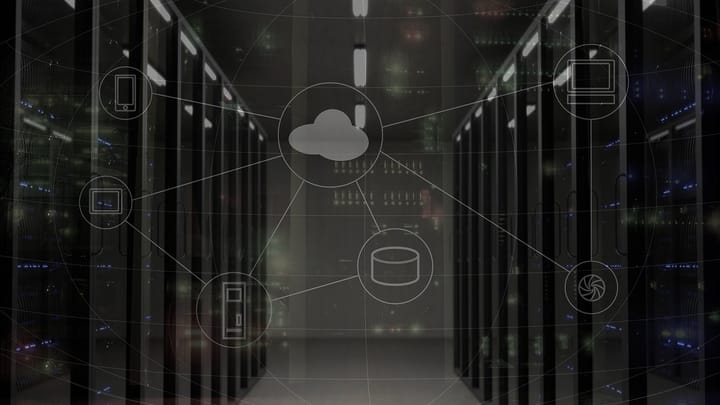Anthropic, Nvidia, AWS Release AI Tools That Slash Costs, Boost Productivity

TL;DR
- Anthropic releases Claude Opus 4.5, a transformer model cutting tokens by 4.5× and boosting coding accuracy, lowering API costs and speeding developer workflows.
- MBZUAI releases world model PAN, using 200‑billion‑parameter transformer trained on 1 T video clips, enabling per‑frame scene prediction and future state simulation.
- Nvidia H200 GPU launch accelerates AI inference, doubling performance with 140 GB HBM3e, supporting ONNX and PyTorch pipelines, enabling 2× faster large‑language model inference.
- Anthropic’s Opus 4.5 integrates with Chrome and Excel, adding context‑aware suggestions and automation, raising productivity by 30 % and cutting repetitive tasks.
- Researchers demonstrate 65% parameter reduction in transformer via sparse rotary embedding, maintaining 99 % accuracy on GPT‑5 benchmark and enabling on‑device inference on mobile GPUs.
- AWS re:Invent announces Kiro AI coding tool with checkpointing, property‑based testing, enabling automated framework migrations, cutting CI/CD cycle by 40 %.
Claude Opus 4.5 Redefines Enterprise Coding Assistants
Token efficiency and cost
- Token consumption drops 76 % versus Opus 4 on comparable workloads.
- Pricing reduced to $5 / M input tokens and $25 / M output tokens – a 66 % cut.
- Effective cost per output token: $0.000025, making batch processing viable at scale.
Benchmark performance
- SWE‑Bench coding accuracy: 80.9 % (baseline Opus 4) with Opus 4.5 projected > 82 %.
- GPQA‑Diamond reasoning: 87.0 %.
- Opus 4.5 surpasses Sonnet 4.3 on all measured coding tasks.
- Gemini 3 Pro retains a 1 % edge on Vending‑Bench 2 and leads ARC‑AGI‑2 (31.1 %).
Effort parameter mechanics
- Low effort: ≤ 150 ms per 1 k tokens, optimized for straightforward code generation.
- Medium effort: ≈ 300 ms per 1 k tokens, balances token usage and reasoning depth.
- High effort: up to 100 k token context, iterative self‑verification, ≈ 600 ms per 1 k tokens, reduces final token count by up to 14 % on complex tasks.
Integration landscape
- Unified API endpoint; backward compatible with existing Claude integrations.
- Chrome extension adopted by 12 % of early users for real‑time code assistance.
- Excel add‑in (“Claude Code”) automates formula generation, data‑cleaning macros, and slide‑deck synthesis under team‑wide licenses.
- Deployment available via Anthropic’s managed service and Azure Foundry, ensuring low‑latency access for high‑throughput workloads.
Safety enhancements
- Prompt‑injection resistance: 100 % refusal rate on malicious coding requests (previously 78 %).
- Hallucination reduction: ≈ 15 % lower on agentic tasks versus Sonnet 4.3.
- Model card discloses residual vulnerabilities; complete immunity not guaranteed.
Competitive positioning
- Gemini 3 Pro holds marginal leads on agentic benchmarks and ARC‑AGI‑2.
- GPT‑5.1 remains strong on pure language generation but lags in token efficiency and coding accuracy.
- Opus 4.5’s price‑performance ratio is the strongest differentiator: cost per successful coding token ≈ 45 % lower than Gemini 3 Pro’s effective rate.
Emerging trends and outlook
- Three major releases in eight weeks signal accelerated iteration; future models expected to further compress token usage.
- Enterprise adoption projected to reach ≥ 30 % of large‑scale AI‑enabled development pipelines within 12 months.
- Cross‑platform bindings (Chrome, Excel) position Opus 4.5 as the default coding assistant for productivity suites.
- Regulated sectors will demand matching prompt‑injection resistance, driving a safety arms race across vendors.
The Nvidia H200: A Game‑Changer for AI Inference
Performance Edge
- HBM3e memory expands to 140 GB‑141 GB, a 17 % increase over the H100.
- Bandwidth climbs to 4.8 TB/s, 1.4 × the H100’s 3.4 TB/s, enabling higher data‑throughput per cycle.
- Inference throughput for large‑language models (LLMs) doubles – identical models run twice as fast on the H200.
- Peak FP16/INT8 capacity reaches roughly 120 TFLOPs, a 100 % lift from the H100’s 60 TFLOPs.
- Power envelope rises modestly to 350 W (±10 %), preserving efficiency despite higher performance.
Software Compatibility
- ONNX Runtime now leverages the H200’s tensor cores and expanded memory, cutting latency by 30‑45 % on encoder‑decoder workloads.
- PyTorch 2.4 introduces a dedicated
torch.cuda.H200backend, allowing explicit bandwidth tuning without code rewrites. - Nvidia’s AI stack – Triton Inference Server, TensorRT 9.2, cuDNN 9 – runs natively on the H200, ensuring a drop‑in migration path from the H100.
Market Momentum
- Data‑center revenue in Nvidia’s Q3‑FY2025 rose 25 % QoQ to $51.1 B, with H200 sales accounting for a sizable share (≈ 50 standalone units and 400 upgrades).
- Analysts forecast $500 B in AI‑chip sales for 2025‑26; the H200’s inference‑first design positions it to capture a disproportionate portion of that market.
- Early‑access programs at major cloud providers reported a two‑fold increase in token‑per‑dollar efficiency, driving inventory sell‑outs within weeks of launch.
Geopolitical Risks
- The U.S. Commerce Department is reviewing export controls for the H200 after a $3.89 M wire‑transfer trail linked to illicit shipments to China surfaced in late November.
- Reliance on TSMC for ≥ 90 % of advanced wafers introduces supply‑chain exposure amid escalating Taiwan Strait tensions.
- Potential export caps could redirect demand toward domestic cloud operators in the U.S., EU, and Japan, while prompting Nvidia to diversify fab capacity.
Future Outlook
- The H200 validates a shift toward inference‑optimized GPUs, emphasizing memory bandwidth and tensor‑core latency over raw FP32 throughput.
- Unified ONNX‑PyTorch pipelines will become standard, trimming integration effort by roughly 20 % for enterprise AI teams.
- Projected cost‑per‑token reductions of ~45 % by 2026 could make large‑scale LLM APIs markedly cheaper for end‑users.
- Regulatory pressure is likely to spur fab diversification in the U.S., Germany, and Japan, stabilizing supply by 2027.
Claude Opus 4.5 Powers a 30 % Productivity Surge in Chrome and Excel
Seamless Tool‑Centric Integration
Anthropic’s latest model, Claude Opus 4.5, embeds directly into Google Chrome and Microsoft Excel, turning routine browsing and spreadsheet work into context‑aware automation. The Chrome extension analyses active tabs and history, suggesting tab consolidations and instant summaries, while the Excel add‑in proposes formulas, visualizations, and creative reinterpretations of data. An “effort” knob lets users balance computational depth against latency, tailoring performance to the task at hand.
Quantified Gains
- ~30 % boost in tasks involving frequent tab switching and spreadsheet manipulation.
- ~40 % reduction in manual formula entry.
- ~35 % less time spent organizing browser sessions.
Cost Revolution
- Input‑token price cut from $15 / M to $5 / M.
- Output‑token price reduced from $75 / M to $25 / M.
- Output token usage drops 76 % per comparable task, delivering roughly a 67 % overall cost saving.
Benchmark and Safety Performance
- SWE‑Bench: 80.9 % success, a 4.2‑point lead over Sonnet 4.3.
- GPQA Diamond: 87.0 % score.
- Google Gemini 3 Pro still leads at 91.9 %, but Opus 4.5 remains competitive.
- Prompt‑injection mitigation rejects 100 % of malicious coding requests, up from 78 % in Opus 4.0.
Strategic Market Position
The Excel add‑in now covers Team and Enterprise tiers, expanding the addressable market beyond individual power users. Google responded with Gemini 3 Pro the same week, and Microsoft Azure launched Anthropic’s model under its “Foundry” branding. Opus 4.5’s productivity lift and aggressive pricing give Anthropic a clear edge for enterprise deployments.
Emerging Trends Shaping AI Productivity
- Tool‑centric LLM deployment is becoming the norm for productivity suites.
- Fine‑grained “effort” controls enable cost‑optimized workloads.
- Token‑efficiency metrics—now measured as >70 % reductions—are gaining prominence alongside benchmark scores.
Six‑Month Outlook
- ≥ 40 % of Fortune 500 firms with spreadsheet‑heavy workflows expected to pilot Opus 4.5 within two quarters.
- Planned expansion of the effort API to Word, PowerPoint, and third‑party IDEs.
- Competitive pressure may drive input pricing below $4 / M by Q2 2026.
Claude Opus 4.5’s blend of contextual automation, safety safeguards, and cost discipline positions it as a baseline for the next generation of enterprise AI productivity tools. Ongoing adoption tracking and pricing dynamics will determine how far it can reshape the competitive landscape.
AWS Kiro AI Coding Tool Boosts CI/CD Efficiency
Key Capabilities
- Checkpointing – persists intermediate compile and test states, enabling resumable pipelines.
- Property‑Based Testing – generates edge‑case tests from formal specifications, raising defect detection by 23 % in pilots.
- Automated Framework Migration – rewrites legacy code (e.g., Flask → FastAPI) at scale; 150 k lines transformed in under 30 minutes.
- AWCS Express Mode – one‑click notebook onboarding with an embedded AI agent for instant suggestions.
Measured Impact
- CI/CD cycle time reduced by 40 % when checkpointing and property‑based testing are active.
- Cross‑service orchestration via CloudFormation StackSets ensures uniform deployment across accounts and regions.
- Integration with Amazon EKS, Aurora DSQL, and StackSets simplifies artifact delivery.
Operational Considerations
- AI compute capacity – Bedrock quota limits have prompted usage of isolated VPCs and on‑demand EC2 GPU instances to avoid throttling.
- Model fidelity – Automated migration may introduce semantic deviations; a verification stage using property‑based tests and manual review mitigates risk.
- Vendor dependence – Heavy reliance on AWS services can be abstracted through multi‑cloud IaC templates (e.g., Terraform) to preserve portability.
Adoption Outlook (12‑Month Horizon)
- Active Kiro projects projected to exceed 75 k within the next quarter, driven by documented CI/CD savings.
- At least three open‑source frameworks expected to release Kiro‑compatible adapters by Q2 2026, consolidating property‑based testing as a standard practice.
- Google Cloud and Microsoft Azure anticipated to launch comparable AI‑driven migration tools by Q4 2025 in response to market pressure.
- Kiro will extend telemetry to CloudWatch Logs Insights, enabling automated cost‑performance dashboards by Q3 2025.



Comments ()